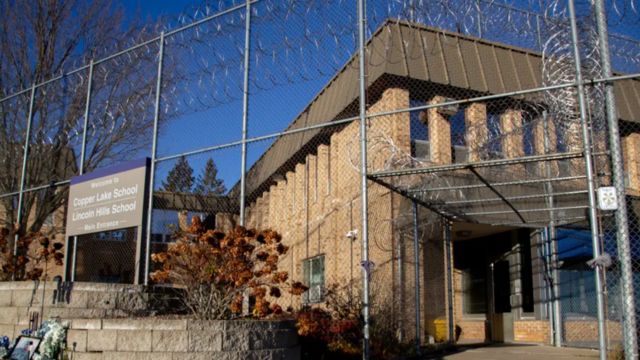This week, Governor Tony Evers will put forth a comprehensive proposal to restructure Wisconsin’s penal system, proposing to close one of the state’s two oldest prisons, renovate the other, and turn the state’s juvenile detention center into a facility for adult males.
The governor will reveal his budget proposal on Tuesday night, and the proposal, which comes to little under $500 million, will be part of it.
On Friday morning, the governor briefed media on the plan’s specifics.
According to Evers, the “domino series of facility changes, improvements, and modernization efforts” would occur between 2031 and budget approval.
Evers stated that the plan is the answer to the state’s rapidly increasing prison population and that there is “no alternative to my plan that is safer, faster, and cheaper.”
Building a facility for young offenders in Dane County would be the first step, enabling the state to dismantle its current troubled juvenile jail complex in Irma, which houses Copper Lake School for girls and Lincoln Hills School for boys. $130.7 million would be the price.
The juvenile Dane County facility’s completion would be the most recent phase of a multi-year plan to close Copper Lake and Lincoln Hills.
Another juvenile facility in Milwaukee is scheduled to open next year, while a comparable facility opened earlier this month in Racine County.
The Evers administration said the Dane County facility would allow the state to relocate juvenile offenders from Lincoln Hills by early 2029.
After that, $9 million would be spent renovating the Lincoln County compound to create a 500-bed, medium-security facility for men.
The $8.8 million conversion of Stanley Correctional Institution into a maximum-security facility would be another crucial component of Evers’ strategy.
Inmates at the state’s oldest prison, Waupun Correctional Institution, were sometimes kept in their cells for months at a time without access to medical care.
This would enable the state to rehabilitate the facility. Following the deaths of five prisoners, Waupun employees have also been charged with crimes.
The prison’s current cell halls would be demolished as part of the anticipated $245 million refurbishment, and new, medium-security facilities called a “vocational village” would be built in their place.
This would be the first Wisconsin jail to adopt such a model.
When people are released, the facility will be “designed to expand job and workforce training to help ensure folks can be stable, gainfully employed, and can positively contribute to our communities,” according to Evers.
Jared Hoy, secretary of the Department of Corrections, stated that the plan will also transform the John Burke Correctional Center in Waupun into a 300-bed facility for women “with little to no capital cost.”
Under the plan, the 1898-founded Green Bay Correctional Institution would close sometime in the spring of 2029 at a cost of $6.3 million.

Because of the prison’s overpopulation, subpar conditions, and staffing shortages, many have advocated for its closure.
The final “domino” series project would add 200 beds to Brown County’s Sanger B. Powers Correctional Center to make up for the lost beds.
According to the Evers administration, the governor’s budget will ensure that Green Bay employees have a position at another DOC facility in order to make up for the closing of the jail.
The governor informed reporters that the facility would probably be sold after that.
The overall goal of the proposal is to prevent the construction of a new jail in Wisconsin, which the governor’s staff estimates would take ten years and cost $1.2 billion.
Though he indicated he was scheduled to meet with Republican lawmakers over the weekend, Evers stated on Friday that he had not discussed the idea with them.
As of February 7, about 23,000 people were being held in the state’s adult institutions.
Army Shifts Millions in BAS Pay for Soldiers, Leaving Food Services Short, Report Exposes
That’s more than 3,000 more inmates than there were four years ago when COVID-19 actions reduced prisoner numbers, and more than 5,000 more than Wisconsin’s prisons’ design capacity.
Advocates for justice reform have maintained that decarceration is necessary for Wisconsin to significantly improve circumstances, including releasing more prisoners and rerouting others to programs instead of jails.
By implementing rehabilitation-focused changes that reduced the number of inmates by thousands, several states, some under Republican leadership and others under Democratic leadership, have been able to close their prisons.
In order to reduce the population, the governor is also looking for some policy adjustments.
Sheriff Calls for $59M in NYC Migrant Hotel Funds to Support Helene Disaster Survivors
He wants to increase the number of nonviolent offenders who have less than 48 months left on their sentences who can participate in the state’s earned release program, for instance, so that more of them can receive treatment for substance use disorders and vocational training.
According to Evers, an additional 1,000 prisoners would probably be eligible for the program if the earned release program were expanded. Currently, 12,000 prisoners are on a waiting list for admission to vocational programming.







Leave a Comment